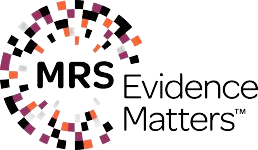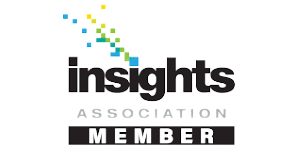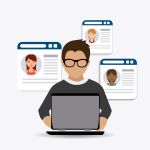Global Antibodies Market – Overview
The report will cover the overall analysis and insights in relation to the size and growth rate of the “Global Antibodies market” by various segments at a global and regional level for the 2014-2027 period, with 2014-2019 as historical data, 2020 as a base year, 2021 as an estimated year and 2021-2027 as forecast period.
Global Antibodies Market – Introduction
Antibodies are proteins made by B cells and are a part of the human body’s immune system. These molecules can bind themselves to specific molecules that make them an ideal probe for cell research purposes. They are also used to isolate and aid in the identification of molecules of interest in cells. Currently, antibodies are one of the most important tools to study the function of a protein in cells. Increasing incidence of neurodegenerative diseases such as Huntington’s disease, Multiple Sclerosis, and Parkinson’s diseases is further encouraging research activities in neurobiology.

Global Antibodies Market Report Scope
- The scope of the report covers the clear understanding and overview of the product.
- Analysis of market trends in the region, with market data considering 2020 as the base year, 2021 as the estimate year and forecast for 2027 with projection of CAGR from 2021 to 2027.
- The report covers discussion of economic trends and technology.
- Market estimates represent revenue.
- In-depth analysis of the market segmentation assists in determining the prevailing market scope.
Segments Covered in Global Antibodies Market
- The market is segmented on the basis of Type, Application, Source, End User and Region. Based on type, the global antibodies market is divided into Monoclonal Antibodies, Polyclonal Antibodies and Recombinant Antibodies. Based on application, the market is classified into Oncology, Infectious Disease and Immunology. Based on source, the market is classified into Mouse, Rabbit, Goat, Human and Others. Region wise, it is analyzed across North America, Europe, Asia-Pacific, and LAMEA.
| Attribute | Details |
|---|---|
| Market size available for years | 2014–2027 |
| Base year considered | 2020 |
| Forecast period | 2021–2027 |
| Historical period | 2014-2019 |
| Forecast units | Value (USD) & Volume (Million Units) |
| Forecast units | Value (USD) & Volume (Million Units) |
| Segmentation | By Regions North America, Europe, Asia Pacific, Latin America and Middle East & Africa |
| By Countries United States, Russia, China, Germany, United Kingdom, France, Japan, Israel, Saudi Arabia, South Korea, United Arab Emirates, Canada, Indonesia, Malaysia, Switzerland, Australia, India, Italy, Sweden, Spain, Belgium, Netherlands, Norway, Brazil, Argentina, Mexico, South Africa and 54 Others. |
|
| By Type Monoclonal Antibodies, Polyclonal Antibodies, Recombinant and Other. |
|
| By Application Oncology, Infectious Diseases, Immunology and Others. |
|
| By Source Mouse, Rabbit, Goat, Human and Others. |
|
| By End-User Hospitals, Academic and Research Institutes, Diagnostic Laboratories and Others. |
|
| Companies covered | Abcam plc; Active Motif, Inc.; Affinity Biologicals, Inc.; Agilent Technologies, Inc.; Amgen Inc.; Analytik Jena AG;Atlas Antibodies; BD; Beckman Coulter, Inc.; Bethyl Laboratories, Inc.; Bio SB; BioLegend, Inc.; Bio-Rad Laboratories, Inc.; Bristol-Myers Squibb Company; Cell Signaling Technology, Inc.; Danaher Corporation; Dickinson and Company; Dovetail Genomics; Enzo Life Sciences, Inc.; Eli Lilly and Co.;F. Hoffmann-La Roche Ltd; GenScript; Jackson Immuno Research Inc.; Johnson & Johnson; Lonza; Merck KGaA; Miltenyi Biotec; Novartis AG; OriGene Technologies, Inc.; Omega BioTek; PerkinElmer Inc.; QIAGEN; Rockland Immunochemicals, Inc.; Sysmex Corporation; Sanofi SA;Takeda Pharmaceutical Company Ltd.;Thermo Fisher Scientific Inc. and Others. |

Covid-19 Impact on the Global Antibodies Market
- The outbreak of COVID-19 has created lucrative opportunities in the market. Several pharmaceutical giants are conducting extensive R&D activities to develop novel vaccines, treatment approaches, and testing kits for this pandemic. These rigorous R&D activities for the development of novel vaccine and treatment approaches have significantly increased demand for research antibodies.
- Furthermore, several private and government organizations are taking drastic initiatives to support the development of COVID-19 vaccines and therapeutics.
- In 2020, GlaxoSmithKline invested USD 250 million in Vir Biotechnologies, a San Francisco-based clinical-stage immunology company, to support its antibody-drug development program for COVID-19.
- The COVID-19 pandemic boosted the demand for antibodies as patients suffering from COVID-19 were highly susceptible to contracting various other ailments and in some cases triggered the autoimmune diseases in the patient.
Recent Developments in Global Antibodies Market
- F. Hoffmann-La Roche Ltd., AbbVie Inc., Johnson & Johnson Services, Inc., Amgen Inc., and Bristol-Myers Squibb Company are leading players operating in the antibodies market. Collectively they will account for 7.5 out of 10 sales of antibodies across the globe.
- In April 2021, Xencor commenced its Phase I clinical trial of its new engineered Interleukin-2 (IL-2) Fc cytokine and XmAb564 antibody therapeutics designed for developing treatment of patients with autoimmune diseases.
- Zydus Cadila is planning to launch its own antibody cocktail, ZRC-3308, through trials in India. The antibody cocktails are used in COVID-19 patients who are at risk of progressing to severe disease.
- In February 2021, Abingdon Health collaborated with Abcam to explore opportunities for their service and portfolio expansion which includes Abcam’s reagent portfolio and Abingdon Health’s rapid test contract development and manufacturing services.
Key Market Players in Global Antibodies Market
- The major players in the Global Antibodies Market are Abcam plc; Active Motif, Inc.; Affinity Biologicals, Inc.; Agilent Technologies, Inc.; Amgen Inc.; Analytik Jena AG;Atlas Antibodies; BD; Beckman Coulter, Inc.; Bethyl Laboratories, Inc.; Bio SB; BioLegend, Inc.; Bio-Rad Laboratories, Inc.; Bristol-Myers Squibb Company; Cell Signaling Technology, Inc.; Danaher Corporation; Dickinson and Company; Dovetail Genomics; Enzo Life Sciences, Inc.; Eli Lilly and Co.;F. Hoffmann-La Roche Ltd; GenScript; Jackson Immuno Research Inc.; Johnson & Johnson; Lonza; Merck KGaA; Miltenyi Biotec; Novartis AG; OriGene Technologies, Inc.; Omega BioTek; PerkinElmer Inc.; QIAGEN; Rockland Immunochemicals, Inc.; Sysmex Corporation; Sanofi SA;Takeda Pharmaceutical Company Ltd.;Thermo Fisher Scientific Inc.; and others. Also, the Global Antibodies Market analysis report includes information on upcoming trends and challenges that will influence market growth. This is to help companies strategize and leverage all forthcoming growth opportunities.
Objectives of the Global Antibodies Market
- To provide detailed information regarding drivers, restraints, opportunities and challenges are influencing the growth in the Global Antibodies Market.
- To analyze the competitive intelligence of players based on company profiles and their key growth strategies.
- To strategically analyze micro markets with respect to the individual growth trends, their prospects, and their contribution to the total Global Antibodies Market.
- To analyze competitive developments such as expansions, and product launches, along with research & development (R&D) activities undertaken in the Global Antibodies Market.
- A unique model is created customized for each study also offers suggestions that help enterprises to identify and mitigate risks.
Note
- Global Industry Reports will also support you post-purchase for a period of 6 months to answer any of your queries related to the following market and to provide you any more data if you need, for your analysis.
- Also, you can buy some selected Chapters from the report.









